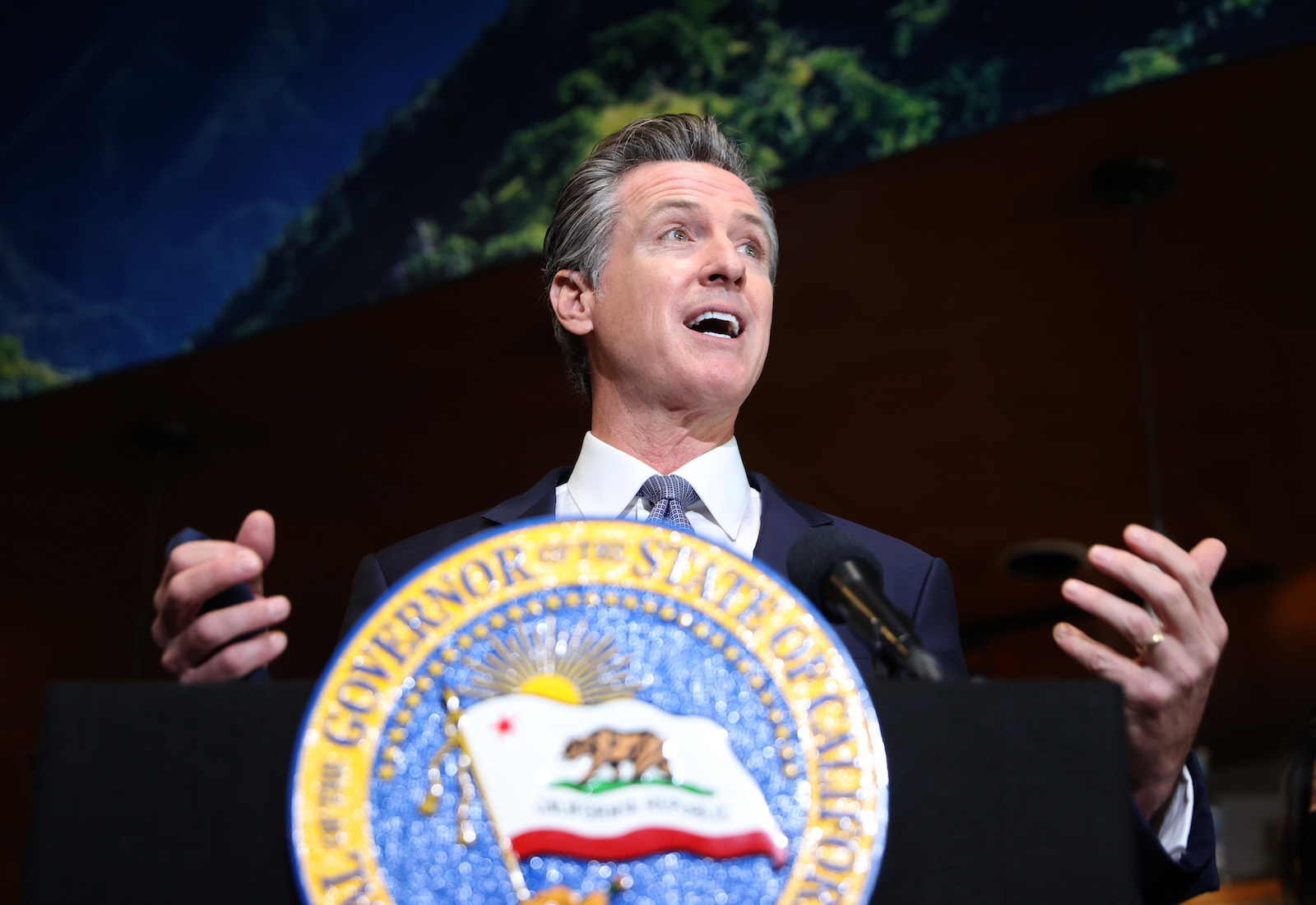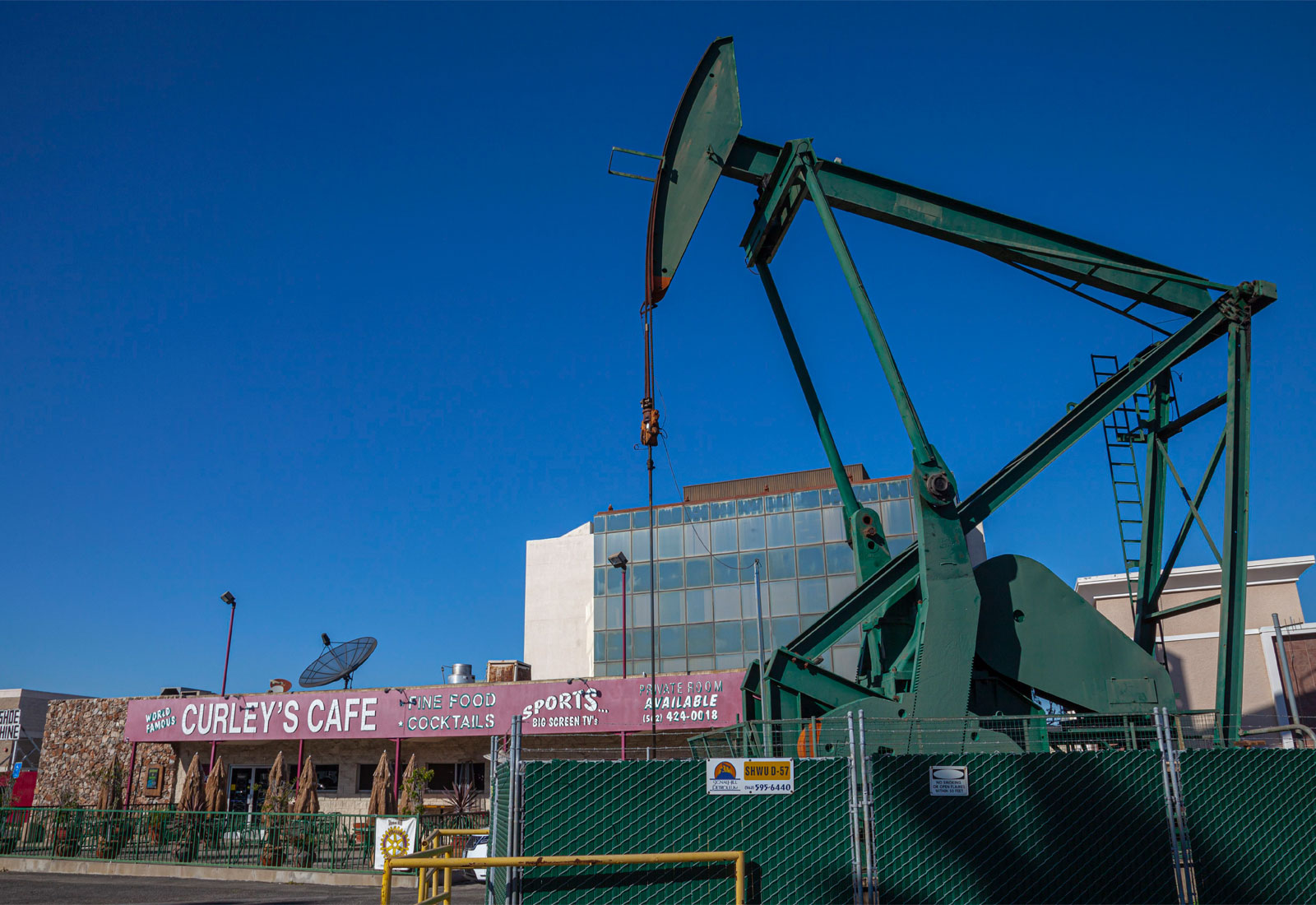This story was produced in collaboration with Capital & Main, a nonprofit media publication focused on inequality.
After years of advocacy by frontline communities, California may finally be on the way to implementing a key health and safety regulation to protect communities living near oil and gas extraction facilities. Governor Gavin Newsom announced the new draft ruling from the California Geologic Energy Management Agency, or CalGEM, today in the Los Angeles neighborhood of Wilmington, one of the most polluted communities in the state. The new ruling will ban the permitting of oil and gas wells within 3,200 feet of community sites, including homes, schools, hospitals, nursing homes, and daycare centers.
California is one of the only oil-producing states that had no regulations on how close oil and gas wells can operate to the places where people live, study, and receive health care. About 2 million Californians currently living within the setback distance of oil and gas wells would be protected by the new ruling; a recent analysis from Grist and Capital & Main showed that 392 schools across the state, serving over a quarter of a million students, are within 2,500 feet of a well. Black, Latino, and low-income communities are most commonly situated near oil wells — making setbacks a key issue to address environmental racism in the state.
“Wilmington residents have lived with the dangerous health impacts of oil drilling for far too long. The governor’s announcement regarding the CALGEM rulemaking shows us that the Newsom administration is listening to us,” said Wendy Miranda of Communities for a Better Environment in a statement. “But now we need them to strengthen this rule and make it law. Countless frontline environmental justice communities have been waiting for this rule and we look forward to engaging in the process to ensure that workers and communities are protected as this rule is finalized.”
The new regulation, once implemented, would be the strongest in the country — stronger even than Colorado’s 2,000-foot setback, adopted last year despite bitter resistance from the oil industry. The Western States Petroleum Association (WSPA), one of the most powerful lobbying forces in California, lobbied in opposition to two previous setback bills; in response to today’s announcement, WSPA CEO Catherine Reheis-Boyd called the rulemaking “an activist assault on California’s way of life, economy, and people.”
Newsom noted in the announcement that the proposed setback would impact 30 percent of oil production in the state. The proposed setback would prevent new wells from being permitted within the setback zone, as well as impose stringent new health and safety requirements on existing wells. Crucially, however, the regulation as written does not prevent the redrilling or deepening of existing wells within the 3,200-foot setback distance. Today’s announcement, however, is only a draft rulemaking — it will be at least another year after it is finalized before it takes effect, likely not until 2023, according to Wade Crowfoot, secretary of the California Natural Resources Agency.
Oil and gas wells have significant impacts on air quality and public health for the communities living next door. A study by Stanford and University of California, Berkeley, researchers released last week showed that communities living within 2.5 miles of oil and gas wells are exposed to higher levels of pollutants dangerous to human health, including fine particulate matter, carbon monoxide, nitrous oxide, ozone, and volatile organic compounds. Of particular concern is fine particulate matter, or PM2.5, a particularly harmful pollutant that was linked to one in five deaths worldwide in 2018, as well as increased risk of COVID mortality.

“The weight of the peer-reviewed scientific evidence demonstrates the adverse community health impacts of oil and gas development,” Seth Shonkoff and Rachel Morello-Frosch, co-chairs of the CalGEM Public Health Science Advisory Panel said in a joint statement. (Editor’s note: Rachel Morello-Frosch is a Grist board member.) “In particular, many studies of birth outcomes and respiratory effects show evidence of harm up to 1km (3,200 feet), and some studies show evidence of harm at even greater distances.”
Studies of communities living near oil and gas wells in California have shown that proximity to oil and gas wells is associated with impaired lung function and higher rates of asthma, as well as an increased likelihood of preterm birth — the leading cause of infant mortality. Studies in other parts of the country have linked living near oil and gas drilling to increased risk of cancer and heart disease. Proximity to wells has also been linked to a laundry list of symptoms for frontline residents, including eye, nose, and throat irritation, nausea, coughing, vomiting, headaches, nosebleeds, and fatigue.
The announcement today reflects years of work by frontline activists to advocate for setback protections. Despite the state’s democratic supermajority, previous attempts to institute setbacks through the legislature have failed in the state. Two bills that would have implemented setbacks — AB 345 and SB 467 — were previously voted down in the California State Senate Committee on Natural Resources and Water, in 2020 and 2021, respectively.
Advocates praised the new ruling as a step in the right direction for the state. “California is really taking the bull by the horns this time. State regulators listened to the scientists and did not shy away from proposing the largest statewide setback requirement in the nation,” said Ann Alexander, senior attorney at the Natural Resources Defense Council, in a statement. “This sends a message to the oil industry that it will not be coddled anymore.”
Other advocates noted the political process that remains before the ruling is implemented. Neena Mohan, climate justice program manager with the California Environmental Justice Alliance, called the ruling a critical first step but remarked that “oil and gas executives won’t let neighborhood oil drilling end without a fight — and we’ll keep fighting for working people until every person’s right to clean air in every neighborhood is guaranteed.”
This story has been updated to clarify the ruling’s provisions related to existing wells.



